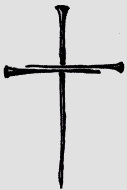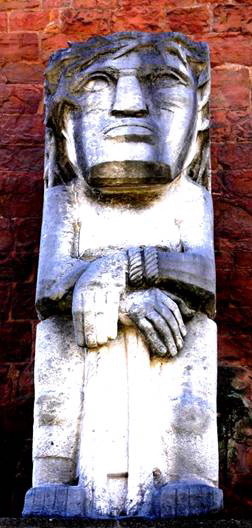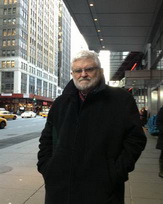I
first came across this brooding figure of a captive Christ in the Fifties, when
it was on display in
Battersea
Park
in
London
. Then it was white, clean and stark, a silent presence, the
work of the sculptor Jacob Epstein. It was carved during 1934-5 from a block of
Subiaco marble. But no-one would give it a home until when, after Epsteinís
death, it was offered to Coventry Cathedral by Kathleen Garman. It was there
that I came across it again, many years later, standing near a wall in the
remains of the old medieval cathedral, destroyed in the early months of the
Second World War, still imposing, majestic in its silence, a haunting presence
indeed.
Nearby,
where the high altar had been is the rough wooden cross, formed from the roof
timbers that burnt in the fire and fell to the ground, along with many nails
that had held the timbers in place.
Someone
tied three of them together in the shape of a cross and later many were
distributed across the world as a sign of reconciliation.

All of which leads us to question in this Easter Season, of the place of
the figure on our crucifixes. In the early days of the Church, the cross as a
symbol did not feature the figure of the Christ, but still became the sign of
the Christian people. Early figures showed, not a Christ in suffering but a
Risen Christ triumphant, a majestic Christ, in front of the cross and that image
is again evident in some churches.
We started Lent with a cross of ash marked on our foreheads. We
walked the journey to the Triduum and witnessed Ecce Homo. The mystery of the
Nazarene, passing over into
Galilee
following crucifixion and the joy of Resurrection, followed.
Now
when we make the sign of the cross it is our redemption that we acknowledge.
+ In
the name of the Father and of the Son and of the Holy Spirit
+
It
is the public sign of our faith, an acknowledgement of who we are, of our belief
in the life, suffering and resurrection of Jesus and the very reason that we
hold to the name of Christian.
END
--------


